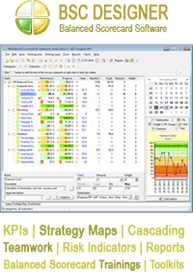Get Better With Delivery Scorecard Metrics
Owning or just even managing a business entity entails a lot of hard work and most of the time they require time more than money and effort. To ensure the well being and success of the business, every possible detail, from the biggest down to the minutest part, must be given proper attention. While there are other people who regard the delivery system of a company as only a minute detail, in reality though, it is an important aspect. Let us say, you have a handful of clients who are making their orders to your sports apparel store. You might be able to adequately supply and attend to their needs based on the deadline that they set since your company has the needed equipment and manpower to generate that number of items. However, have you also realized how you might able to catch up with the deadline with a very ineffective delivery system? To help you figure out if you have a good performing delivery unit, use delivery scorecard metrics.
Assuming that you do have a good delivery unit that can send out orders to any point in the world. However, can you be able to cater to multiple orders that need shipment within a day? Pressing situations like this will surely put your business and you to the test. A good way then to get rid of these possible delivery woes is measure its effectivity.
Delivery system metrics are basically measurements or indicators used to evaluate and analyze the status and success rate of your delivery unit. These metrics are typically encoded into a scorecard system, a software application that processes the data into meaningful information. Employees from such units as manufacturing, distribution, delivery, and customer satisfaction usually input the data.
Prior to choosing the delivery system indicators, the manager must first understand that these metrics differ from organization to organization. This is the case since not all businesses have the same goals. One company may be profit-driven while the other may be market-oriented, meaning they are after primarily of market dominance. But most of the time, there are metrics that companies share in measuring the performance of their delivery units. Among the most widely applicable are: cost savings for consolidations, counts of orders, counts of shipments, productive miles driven, volume categorization according to type order, freight billing, freight claims, on time delivery, cycle count, returns handling, order receiving performance, order shipping performance, cost perspective weight, speed, average vessel turnaround, average time for procedures, time perspective, storage utilization, warehouse use, time spent picking back orders or stock outs, and frequency of damage.
Some of these delivery system metrics are customizable which is a great option for companies who might want to put a tailored touch on their performance measurements. Your company may also come up with an original metric. Whether you are adapting conventional metrics or customizing them, the thing is, managers should align the metrics with the objectives of the business.
Remember however that delivery scorecard metrics are not meant to solve any weaknesses or crisis in your delivery units. They are, however, designed to help you come up with practical, up-to-date, and cost effective decisions.
—
If you are interested in delivery scorecard, check this web-site to learn more about delivery kpi.


